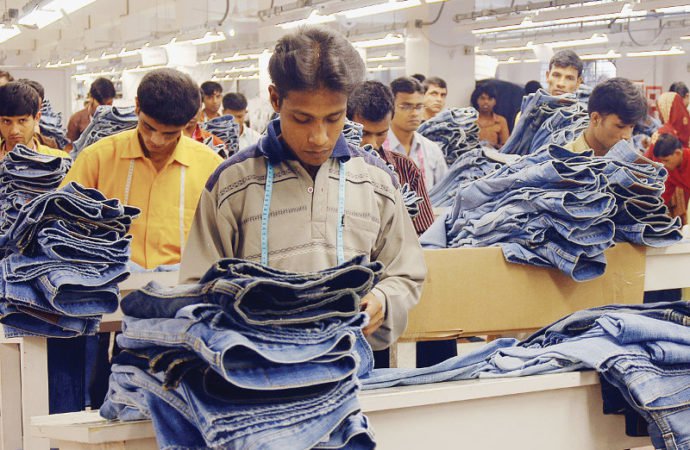Published in the Dhaka Tribune on June 7, 2017
A fall in global demand for Bangladesh’s lucrative ready-made garments (RMG) sector caused a slowing in the rate of export earnings growth in the last fiscal year, data from the Export Promotion Bureau (EPB) has revealed.
Although Bangladesh’s overall export earnings rose 3.67% rise in the first eleven months of Fiscal Year 2016-17 to hit $31.79 billion, the growth in export earnings slowed to 1.39%, earning $3.07 billion against the target of $3.35 billion set for the month.
Trade analysts and leading sector figures have said the slow rate of growth highlighted by the EPB figures is due weaker demand in the RMG sector – the lifeline of Bangladesh’s economy in terms of export earnings.
“Low demands in global markets caused slower growth in Bangladesh’s exports earnings, which is even seen in other countries,” Khondaker Golam Moazzem, research director at Centre for Policy Dialogue (CPD), told the Dhaka Tribune.
“It is a matter of concern as it may adversely impact backward linkage industry, production and even the Gross Domestic Product (GDP).”
Of the total export earnings in the July-May period of FY 2016-17, the RMG sector grew by 2.16% to contribute $25.62 billion, or 80.59%. The sector, however, failed to reach its target of $27.38bn.
Moazzem added that the government offered some incentives for the apparel sector in the proposed budget unveiled on June 1, but said it is not up to the expected level.
“Since the budget is proposed, the government should take measures that would help boost exports, especially in the non-traditional markets,” he said.
Exporters Association of Bangladesh (EAB) president Abdus Salam Murshedy told the Dhaka Tribune that he thought the situation was “critical”.
“The government should come up with comprehensive package in the budget for the next fiscal year, or else, the crisis in the manufacturing industry may linger,” he warned.
“The growth rate is much lower than expected due to losing competitive edge in the global market to our competitors. Bangladesh’s production capacity in the RMG sector has also gone down due to the ongoing remediation, which may be another reason,” he said.
Of the total export earnings in the July-May period of the current fiscal year, knitwear posted 4.91% growth to $12.5 billion, but woven garments witnessed negative growth and were 0.33 % down compared to the $13.16 billion revenue of the previous period.Jute and jute goods posted a 9.84% rise to $903.69 million, while the home textile sector posted 6.72% growth to $737 million.
Leather and leather goods earned $1.12 billion, which is 9.17% higher compared to $1.02 billion in the previous year.
Among the major sectors, frozen and live fish witnessed negative growth by 1.89% followed by processed leather, which fell 10.31% to $225 million.
 CPD RMG Study Stitching a better future for Bangladesh
CPD RMG Study Stitching a better future for Bangladesh




